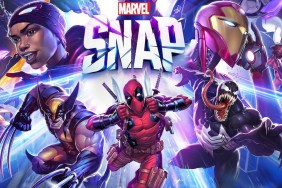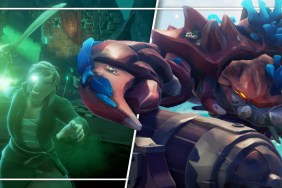A perfect match.
As far as I'm concerned, Puzzle Quest has finally come full circle. The first time I played Puzzle Quest: Challenge of the Warlords on the PlayStation Portable way back in 2007, I immediately thought of Magic: The Gathering, not from the match-3 gameplay of course, but in the way that gathered mana of a specific color would cast spells in a similar fashion to the classic five colors of MTG. Then six months ago I found a hidden gem for my tablet called Gems of War, made by the original creators of Puzzle Quest, which adds hands of four upgradeable cards to the mix like in Blizzard's Hearthstone. So it was only a matter of time before someone had the bright idea to convince Wizards of the Coast to jump into the gem-matching craze once and for all.
Published by D3 Go! and developed by the Montréal-based Hibernum Créations, the free-to-play Magic: The Gathering Puzzle Quest pits you as one of the five classic planeswalkers from Magic Origins—Jace, Gideon, Nissa, Chandra, and Liliana—against a ladder of story-based opponents (as well as online opponents once multiplayer is functional). Matches play out in a very simplified version of a standard Magic: The Gathering match between two planeswalkers, where the objective is simply to knock the opponent's life to zero by using creatures and spells. But instead of tapping land for mana to cast them, you will be matching gems on the familiar Puzzle Quest board.
Of course, there are numerous rule adaptations for this video game mashup to work on mobile platforms, but the game retains plenty of strategic complexity. During your turn, you draw a card from your deck, composed of 4 copies of 10 cards just to keep things simple. You can then arrange your cards however you like on your hand or stack, and once you obtain enough mana from the board to cast the top card on the stack, it goes into play. Now, you don't have to worry about matching a specific color of mana like you would in a regular MTG card match—all mana contributes to the spell no matter the color—but your planeswalker does have favored and unfavored affinities with certain colors; for example, the planeswalker Gideon will earn extra mana for matching white gems on the board but not so much for red or black.
So long as you match enough gems on the board, you can start casting away so it's worth taking the time to look at the board so that you can get a string of cascading matches. If you're lucky enough to match five gems in one shot, you'll earn an extra turn; Puzzle Quest fans will note that it normally only takes a four-in-a-row to get an extra turn, but this change was made because there are fewer colored gems here (MTG doesn't have purple) and because the game's 7×7 board is a bit smaller. Additionally, the skulls on the board that typically deal damage directly to the opponent are now special mana that fuels the abilities of your chosen planeswalker.
As for the cards themselves, you can only have three creature cards out at any given time and your creatures automatically attack the opponent at the end of your turn. More importantly, creatures can't block unless stated otherwise (e.g. vigilance lets creature block), so matches are quicker and deadlier. Also, any MTG cards that would be equipment, enchantments, and other permanents (and even some monster cards) have been transformed into support gems on the board with a shield around it. So long as that gem is on the board, it will continue to grant its effect. In order to destroy an opponent's support gem, you need to break its shield by matching it with other gems.
All told, it takes a lot of chin-rubbing to figure out how best to approach a battle, since you have to consider the order of the cards on your stack (which you can rearrange at any time), when to use a planeswalker's ability, and how to inflict more damage on an opponent than the other way around. It took about three matches for me to understand the depth of the gameplay beyond just matching gems willy-nilly. And with so many different cards to choose from, the scope and flexibility of the game will be quite high.
It's very clear that Magic: The Gathering Puzzle Quest isn't messing around, either. Hibernum Créations plans on translating at least 250 cards from the Magic Origins set into the game, and will have robust online events as well that have yet to be revealed. While there is soft and premium currency, players can earn both forms of currency by completing bonus objectives during matches. More planeswalkers, including multi-colored ones, will be available after launch and can be purchased using premium currency, while the soft currency will level characters up and can be used for boosters. However, all of this is subject to change, as the game reaches its release date this fall on the App Store, Google Play, and the Amazon Appstore.










